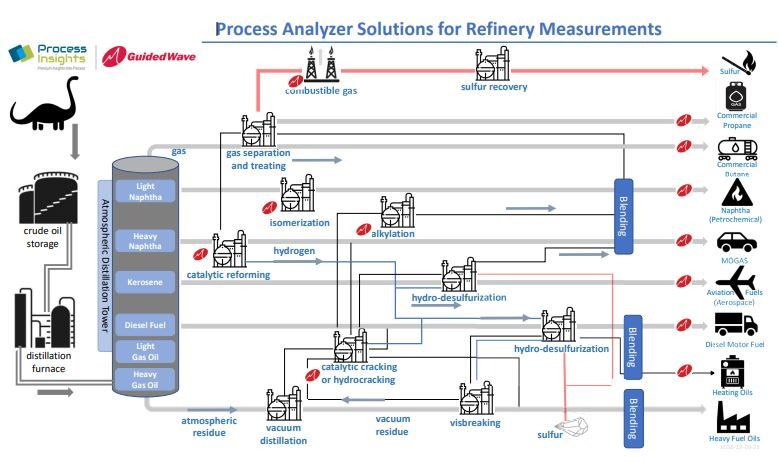Refineries process crude oil into usable petroleum-based chemicals. Process analyzers such as ATOM INSTRUMENT’s Flare Gas Analyzer, SOFRASER’s Thermoset Viscosity Analyzer, our Near Infrared Spectrometer/Photometers, and in-situ sample interfaces are all necessary for real-time monitoring in a profitable modern refinery. By installing and calibrating these process analyzers, technicians and plant managers gain access to a wide range of actionable information in seconds. Thus, enabling them to optimize operating conditions.
The infographic shown below outlines where different analyzers can be installed in a refinery and the various ASTM methods that they satisfy.




